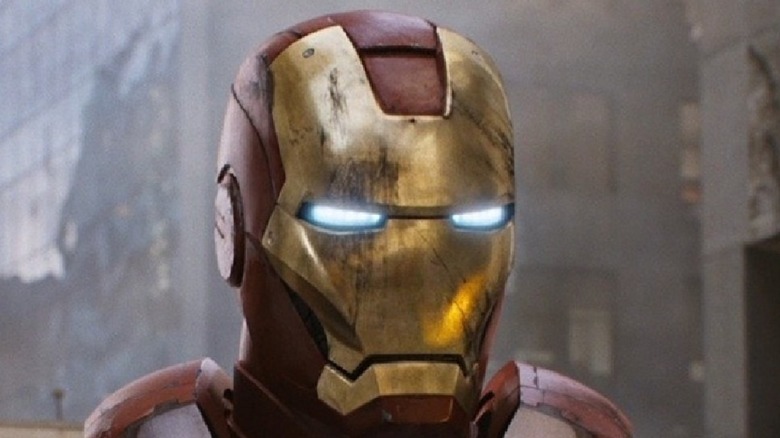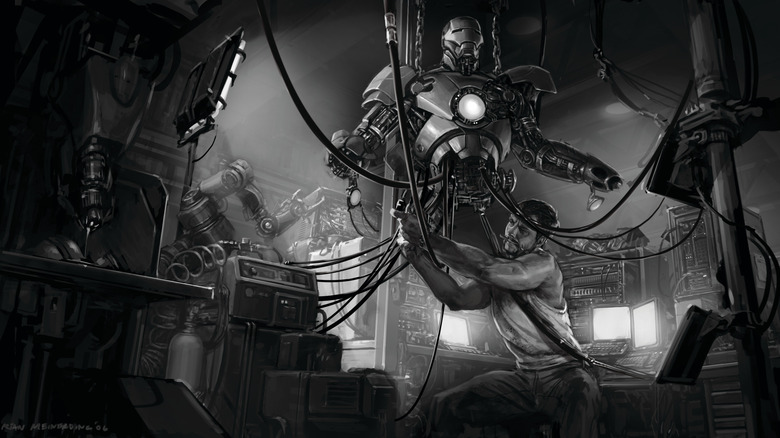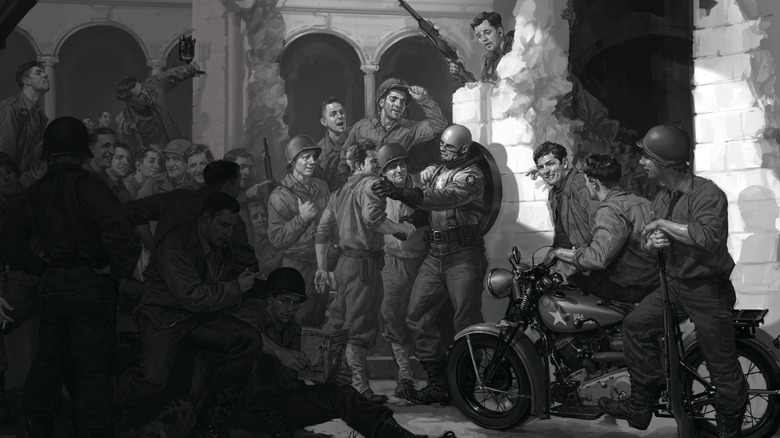MCU Head Of Visual Development Ryan Meinerding Dishes On The Evolution Of Iron Man's Armors - Exclusive
Between all of the action, grit, and heart in the MCU is one intricate thing: design. When we watch the final battle of "Avengers: Endgame" and marvel at the massive factions of heroes from all over the galaxy, those images didn't come from nowhere. Long before a director ever stages a single actor, concept artists help map out the movie's scenes. When it comes to the MCU, there's nobody greater than the MCU's head of visual development Ryan Meinerding, who provided concept art for "Iron Man" before the universe existed.
Looper chatted with Ryan Meinerding an exclusive email interview to promote the new book "The Story of Marvel Studios: The Making of the Marvel Cinematic Universe" (written by Tara Bennett and Paul Terry). He dished on the process of conceptualizing Iron Man's suit, his inspirations for the design, and if he knew then just how massive this franchise would become.
On his areas of design for "Iron Man," Meinerding said, "I worked on the Iron Man Mark 1 on that first film and supporting tech like one of the RT designs, Howard Stark's Arc Reactor, Tony's boot test costume, and keyframes from various parts of the film." However, he had some personal inspiration for the designs: "My grandfather had a machine shop when I was growing up, and my dad would take me there every few days. A lot of the early stuff I worked on for 'Iron Man' was centered around things I remembered from that shop — the huge machines, the grime, the hands-on quality of all of it."
The evolution of Tony's super suit
He continued, "I pitched a number of those elements to Jon [Favreau] and that time, and some of that made it into the movie. Michael Riva and his team did such a great job on Tony's workshop."
Fans may have noticed a similar vibe between Iron Man's first super suit and his first on-screen one. Well, that was intentional. "As far as the Mark 1, I was looking at what Phil [Saunders] and Adi [Granov] were doing with the Mark II and III and thought I could try and take the comic reference for Iron Man's first grey suit and add as much reality to it as I could," Meinerding explained. "So that meant keeping the center RT and designing forms around it that allowed highlights to look like they are radiating outward from that center light. I was also looking at doing different finishes on the different parts of the suit so it would appear as if they were coming from multiple different sources."
Among the aesthetics, though, came the technical bits. "There was a degree of trying to include enough bulkiness so Tony could've hidden what he was working on, as well as showcasing how protective and strong the suit is. I added belt drives to the legs to keep the drive mechanism outside the armor of the suit — mostly to add a bit more interest and realism," Meinerding noted.
From movie to franchise overnight
Most fans wouldn't think of the suit's functionality when looking at it, but Meinerding was on top of the intricacies. "The last important component was keeping much of the armor on the front of the suit — he didn't have time to armor the back — which allowed some additional interest to the back but also made the suit vulnerable in a way that made sense with the story," he said. "The suit was also meant to be a one-direction, one-way ticket — straight ahead — which obviously means its existence is meant to be short-lived." He added, "I showed a few examples of those ideas to Jon [Favreau] and Marvel, and it came together pretty quickly from a design point of view. I then got to work closely with Stan Winston Studios to model it in preparation for 3D printing."
On how quickly the MCU blew up and became the MCU, Meinerding noted his surprise. He said, "'Iron Man' was the first big movie I worked on — not only did I have no idea how big the franchise would become, I just felt lucky to be there on that single film. Despite not seeing the future, there was an electricity surrounding that production — just the notion that this was the first movie from a new studio felt like something really special." Fans would have to agree on that front.
MCU fans can purchase "The Story of Marvel Studios" on the Abrams Books website.


